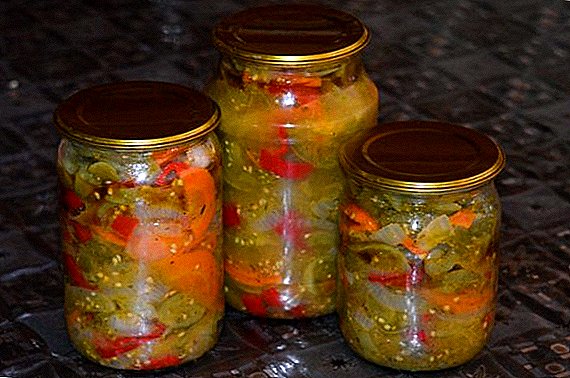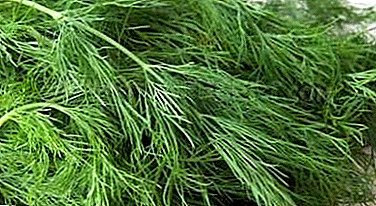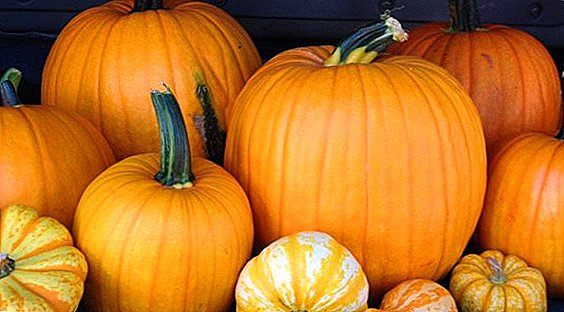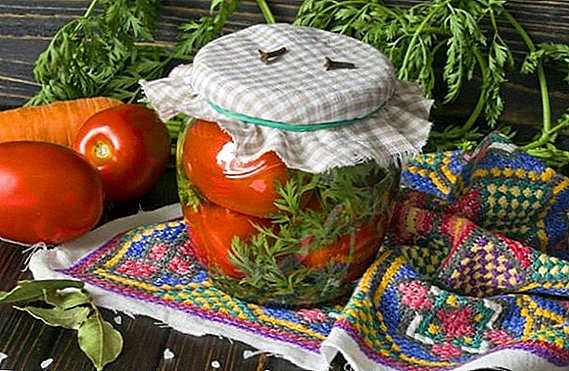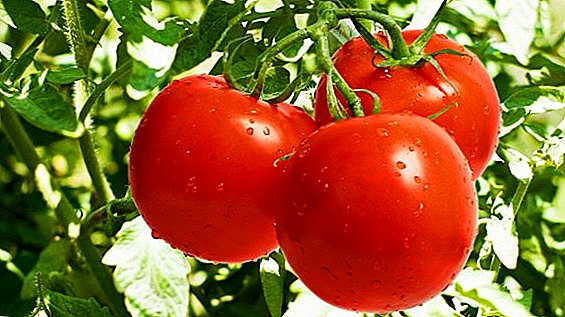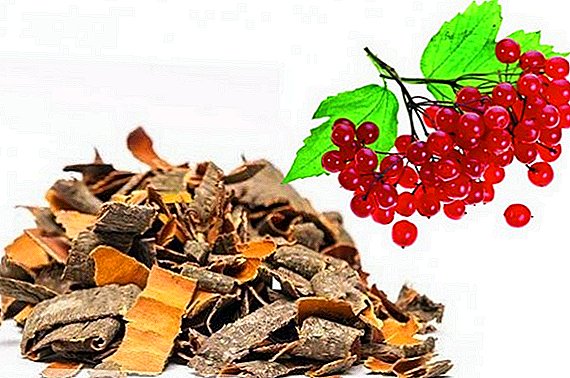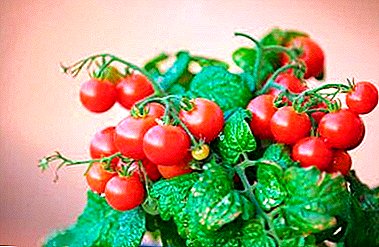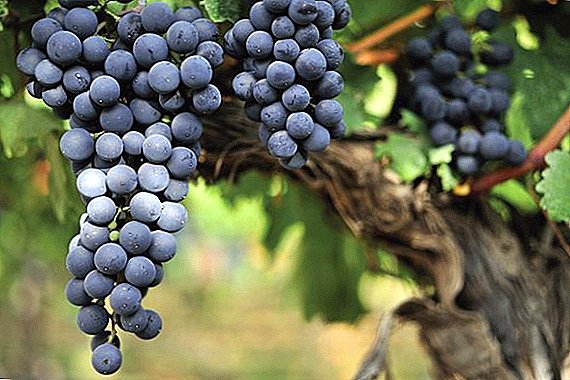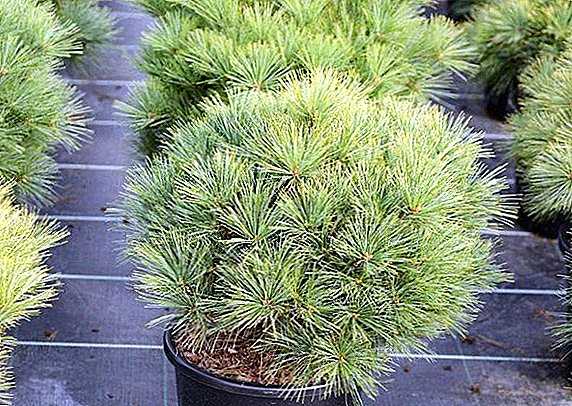 The mountain evergreen tree was brought to Europe by Lord Weymouth. But then the pine tree did not take root in the harsh continental climate. Now white eastern pine can be found in parks, squares, alleys and even summer cottages. Let's see how to grow a seemingly unpretentious plant and how to propagate it.
The mountain evergreen tree was brought to Europe by Lord Weymouth. But then the pine tree did not take root in the harsh continental climate. Now white eastern pine can be found in parks, squares, alleys and even summer cottages. Let's see how to grow a seemingly unpretentious plant and how to propagate it.
general description
Weymouth pine (Pinus strobus) falls under the typical description of all representatives of the class Conifers. This species got its name as early as the middle of the 18th century, and later other subspecies were bred. Long before obtaining its name, white eastern pine was used for the construction of ships.
Read also about the cultivation of mountain, cedar and black pines.

Type variety Pinus strobus reaches a height of 70 m. But the most famous pine trees up to 35 m, while their age can be 90 years. The thickness of the trunk - up to 1.5 m, the crown is not too thick and can be conical or just oval, rounded shape.
Lateral organs (needles) are formed from whorls, therefore the branches are designated whistling. They are thin and do not grow rude over time, unlike the bark on the trunk. The shoots of the shoot are egg-shaped and reach a length of 0.5 cm. The needles are dark green, of medium size (up to 7 cm in length) and thin, slightly resinous, updated every 2-3 years.
Male cones do not produce seeds and much less than female ones. The latter, after disclosure, change the shape to a cylindrical shape and are repainted to a brown color. Maturation of female cones occurs every 2 years. After resetting the seeds, the cones fall off.
Did you know? The rarest variety of white Allmouth "Alba". Differs white-green needles.

Popular varieties and cultivation features
Weymouth Pine grows in a humid, cool climate. It can withstand different temperatures - from -29 ° C to +13 ° C. Most often, its varieties are found in the east of the United States and on some French islands. Let us examine some varieties and species of White Pine and consider their photos.
Weymouth pine blends well with lindens, beech, oak, hazel, sea buckthorn, goofy, maples, larch, spruce and fir.This type of pine has some features of cultivation. For example, it is necessary to free its lower shoots from the snow - they are very thin, besides the abundance of snow can lead to rot and fungal diseases.
"Radiata"

Pine wemutov "Radiat" differs from the typical type not only by planting and care, but also by its growth, which reaches only 3.5 m. Needles are soft, green, with a blue tint. It grows, like all species, into an irregular shape, lends itself well to pruning in spring and autumn. 
It grows fast enough. Krone 2-2.5 m in diameter. The tree is most often used in a single planting. Pine is planted in loamy soil, preferably on the dark side of the plot. Young plants look like shrubs, but with age the tree is drawn out.
"Minima"

This variety is dwarf and grows up to 1 m in height. Crohn fluffy and thick, soft needles with a yellowish tinge. It tolerates winters, but in the cold from -30 ° C you should cover the pine with spruce branches or burlap. Minim is propagated by grafting in early spring or early autumn. Planting is done in drained fertile soil on the sunny side of the site. 
Important! Weymouth pine cannot be planted next to currants or gooseberries, otherwise the needles will become infected with blister rust.
"Minim" the best plant on the alpine hills and next to other tall coniferous trees. It looks great with large flowers and perennials.
"Pendula"

Weymouth pine "Pendula" differs from all species in its branches. This type of pine similar to a weeping willow. The branches do not grow up or sideways, but hang down. This creates the impression of a certain "coniferous waterfall". Needles up to 8 cm in length, bluish-green. Unpretentious to the soil and planting site. 
Often used as a single plant on the site. "Pendula" - a plant with good immunity and rarely affected by disease. Frost resistance allows you to grow it in the northern regions. But do not forget that all the varieties of White Pine do not tolerate the continental climate.
Minimus

Weymouth pine "Minimus" also applies to dwarf species and reaches no more than 1 m in height. This type is practically indistinguishable from the Minima variety, and it can often be found in landscape design. It grows on moist aerated soils. Landing place is better to choose the sun, "Minimus" - thermophilic pine. The variety is responsive to abundant feedings. It is undesirable to plant near fruit trees.
"Makopin"

The White Makopin dwarf pine grows slowly and can reach 1-1.5 m in height. One of the few varieties that have the correct form and grow a little. Cones hanging, and their number - up to 3 pieces per branch. Needles are soft, cool blue hue. Crohn grows more in diameter. 
The variety can be used as a tapeworm or in alpine slides. Planting and care do not constitute a lot of work, as the plant adapts well to cold winters, practically does not require shelter and watering. The soil is necessarily loamy or sandy.
"Fastigiata"

"Fastigiata" grows more in height than in diameter. Can reach 15m. The branches are directed upwards. The grade gets on well on any soils. "Fastigiata" do not suit completely sandy soils. Responsive to frequent watering and feeding. 
The crown is not too thick, cones up to 4 pieces per branch. Lives on acidic and alkaline soils. Evergreen slowly grows and at age 25 can be only 6 m in height. The shoots are hard, the needles are soft, dark green.
Important! Excessive humidity and gas pollution will not allow the pine to grow normally, and as a result the plant may not settle down.
Care Tips and Tips
Coniferous trees are unpretentious in caring for them; nevertheless, much depends not only on the soil, but also on the fertilizer applied and the regularity of watering. Many believe that evergreens do not need regular watering, but it is not. Weymouth pine may also be affected by pests and diseases, so it is important to know the rules for caring for the species and follow some tips.
Watering rules
Mature pines need watering every 2-3 weeks. The volume of water should be at least 10 liters per plant. It is important not to let the water stagnate, because then salts form, and the tree will dry out.
In the summer you can water every week, but in small volumes. You can also moisten the branches in a small-drop manner by spraying water from a hose. This is especially important for young seedlings. 
Soil care
Every fall need to carry out mulchingIt is especially important to do this for young pines. And loosening will allow the soil to get more oxygen, and this is important to do before watering.
Mulch is made from peat or fallen needles, sawdust can also be added. It is laid out in a layer of 15-20 cm. In the mulching of mountain pine, dolomite flour is also used (crushed mountain mineral), which will help bring growth closer to natural conditions and better protect the plant.
Top dressing
Mountain pine may disappoint with its growth, but the situation can be changed. Enough use biostimulants and drugs that are aimed at increasing the root system. After all, conifers do not need so frequent and abundant fertilizing with organic fertilizers. In early spring, you can make a small amount of mineral fertilizers, which will help the plant to move away from winter.
Pruning
Due to its ornamental appearance evergreen tree needs only cosmetic trimming. This is especially true of dwarf species, which usually grow in the diameter of the crown. Pruning will help give the pine the desired shape. It is also important to remove internal shoots. Trimming is usually carried out in April and October.
Breeding features of the whitemoon pine
Like many conifers, white eastern pine propagated by seeds and grafting. The first method is remarkable in the wild, but its prevalence is high among gardeners, because it is cheaper to sow seeds. However, the second method (vaccination) is used to grow decorative and expensive varieties. Let's look at all sides of these two ways.
Did you know? The peculiarity of this type of pine is that in a whorl there are not 2 needles, but 5.
Seeds
This process is not much different from planting seeds of perennial shrubs. At first seeds need to be stratified. To do this, they must be put in a dark place with a low temperature for 3-4 months, then sown in a separate container. The soil in it is desirable alkaline with the addition of mineral fertilizers.
Sowing seeds occurs in early spring. The container with crops needs to be densely covered. At the first shoots it is necessary to transplant them into separate containers. In this way, the typical type of Pinus strobus is usually grown. When propagated by seeds of other subspecies, their characteristics will not be preserved. 
Inoculation
Grafting conifers takes a lot of time, but not a lot of effort. For example, if you want to vaccinate in early spring, as experts often recommend, then begin to prepare the graft in winter.
If you decide to spend it in the summer (end of August), then it suffices to put the cuttings in the refrigerator, that is, to stratify them. It is advisable to store them in an airtight container. Large cuttings better retain their properties. Often the cuttings can dry out. Therefore, wrap them in a damp towel before storing them.. Store them at a temperature of 0 ° C.
Did you know? The root system of white pine is 20 times larger than that of fir.
Weymutov pine should be grafted on the same five-coniferous plant - any cedar pines or other types of white pine.

Vaccination inventory:
- Knife. Necessarily sharp. Often use a razor. If you are vaccinating for the first time, then pick up a few sharp knives and select one of them.
- Extra knife. Used for trimming needles. Thus, the grafting knife does not need to be cleaned from the resin and sharpened again.
- Winding material. There are special tapes, but you can make them yourself from scrap materials. The main thing that the material was strong and elastic.
- Alcohol and wipes are needed to wipe the knife from the resin.
- The first aid kit should always be on hand in case of a cut.
For vaccinations often use a special pruner.
Vaccinations are stored in greenhouses or dark places, away from sunlight. Humidity should be kept high (you can cover with some capacity). The temperature should be + 20-22 ° C. The winding can be removed with the active growth and the emergence of new needles.
Weymouth Pine is a good solution to refine your plot. Evergreen has high immunity and shows good frost resistance in our climate. Nevertheless, it is important to create for him the necessary conditions for development: timely watering, pruning and top dressing. Then this beautiful conifer will delight you for many decades.


